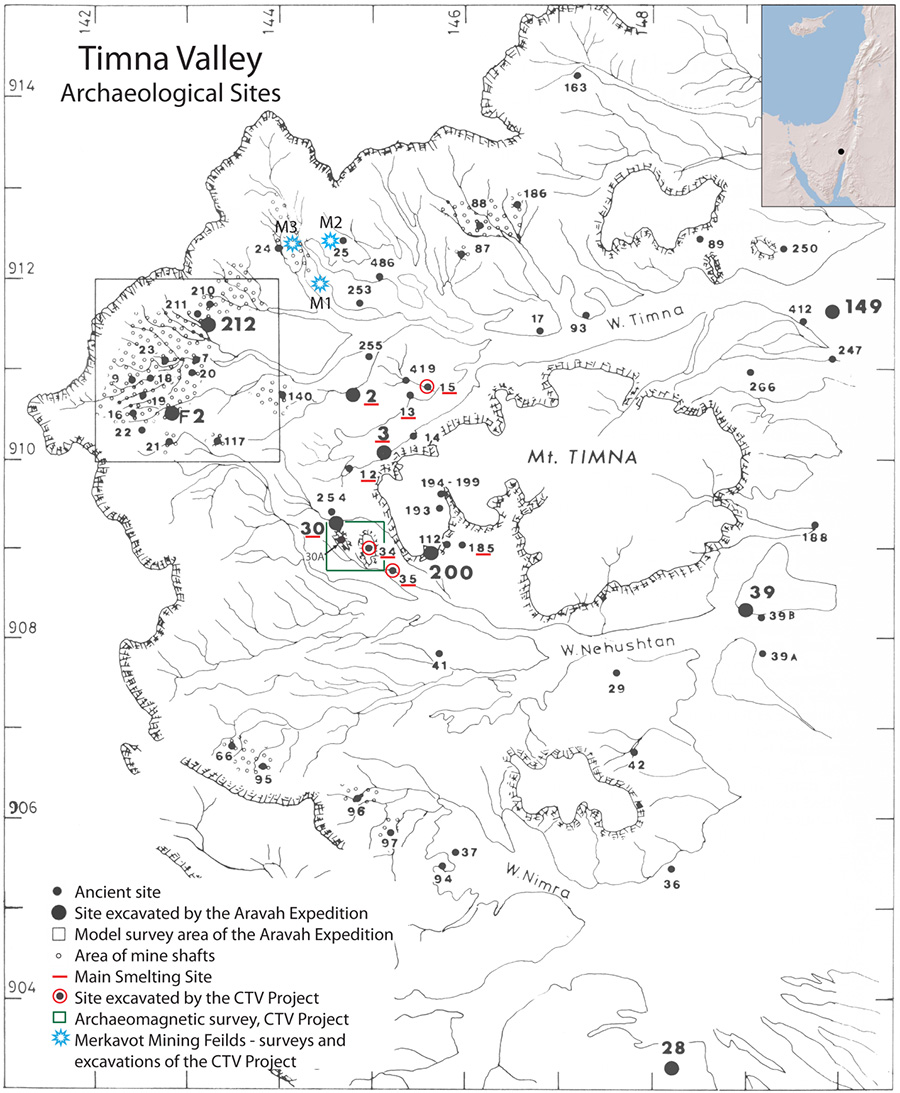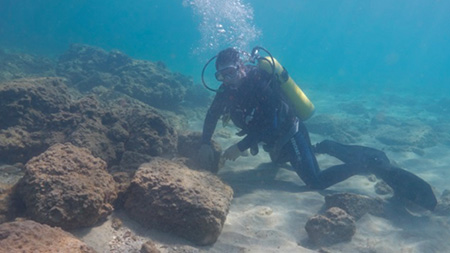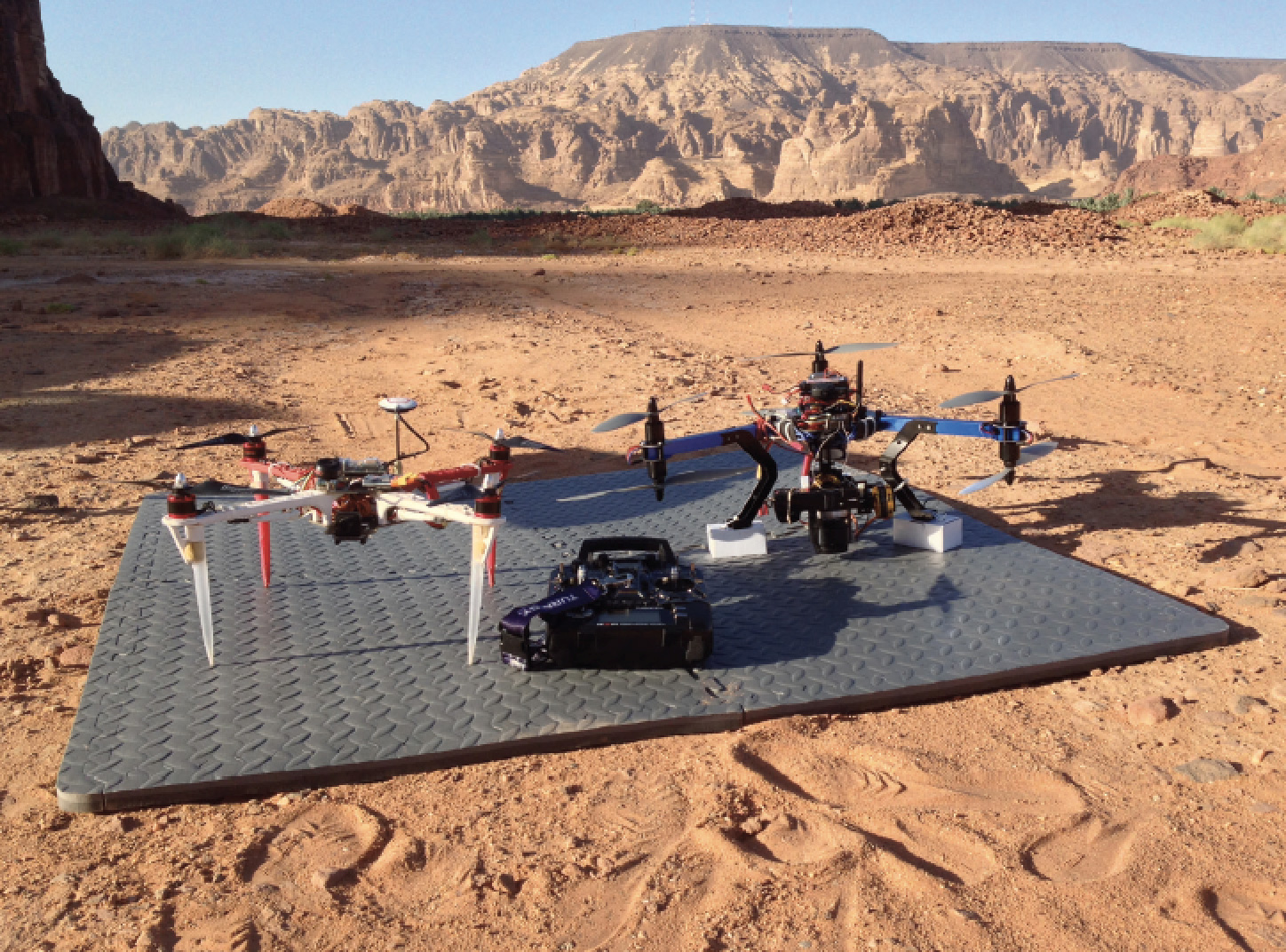UC San Diego Archaeologist to Fly Explorers Club Flag on Desert Land and Sea Expedition in Israel
Published Date
By:
- Doug Ramsey
Share This:
Article Content

Archaeological sites in Israel's Timna Valley, and the expedition will map the entire region with drone technology.
The Flag and Honors Committee of The Explorers Club has awarded an upcoming expedition led by UC San Diego archaeologist Thomas E. Levy with the honor of carrying The Explorers Club Flag on what Levy calls “the first integrated desert land and sea cyber-archaeology project to be carried out in Israel.”
Levy’s team will bring the Explorers Club flag along when they depart August 29 for Israel. The expedition is the centerpiece of the 3D Israel Archaeological Land and Sea Project. Led by Levy, it is a partnership among UC San Diego, the University of Haifa and Tel Aviv University.
According to Levy, a distinguished professor of anthropology and archaeology at UC San Diego, “This joint U.S.-Israeli project will also demonstrate how cutting-edge technology in the fields of cyber and marine archaeology can uncover new insights into societies dating back thousands of years.”
A Fellow of the Explorers Club since 2009, Levy received one of its highest honors – the Lowell Thomas Award – in 2011. That same year, he also carried Explorers Club Flag 117 to the Faynan region of southern Jordan as part of a deep-time archaeology and ancient metallurgy expedition. (Click here for the Flag report Levy submitted following that expedition.)
“The Flag represents an impressive history of courage and accomplishment,” said Explorers Club vice president for Flag and Honors, David G. Concannon, in announcing the new award. “It has been carried by our members to the Moon, to the depths of the ocean, and around the globe. It is both an honor and a privilege to receive this special recognition, which we are delighted to extend to [Professor Levy] once again.” This year Levy’s team will carry Flag 179, which previously accompanied the 1963 American Mt. Everest Expedition, two Institute of Nautical Archaeology expeditions to the Tantura Lagoon in Israel, and many others.

Diver from University of Haifa points to stone anchors from 2nd or 1st millennium BCE resting on seabed in Tel Dor bay.
On the UC San Diego end, the expedition will draw on personnel from two recently-launched research centers in which Levy plays a leadership role: the Scripps Center for Marine Archaeology (SCMA), and the Center for Cyber-Archaeology and Sustainability (CCAS), the latter based in the Qualcomm Institute on the UC San Diego campus. Levy directs CCAS, and is co-director of SCMA with Scripps Institution of Oceanography professor John Hildebrand.
The Land and Sea Project will explore on land and offshore Israel from Iron Age copper mines to a Mediterranean port. The expedition is actually two mini-expeditions. Archaeologists, computer scientists and engineers will study two historically important regions in Israel that were united in antiquity through the copper trade during the Biblical Iron Age (ca. 1200-586 BCE).
“These two intertwined projects focus on Tel Dor, the only preserved Iron Age port along the eastern Mediterranean coastline from Syria to the Nile Delta, and the Timna Valley, which includes the largest copper ore resource zone in Israel,” said Levy. “This unique land-and-sea project aims to use state-of-the-art digital recording tools to collect data underwater and from the air to prepare 3D content, models and animations of the Tel Dor bay and submerged port and the Timna’s mining landscape that includes copper processing sites and ancient mines dating to the Iron Age.”
The aerial and underwater 3D imaging and dating of the Iron Age port of Tel Dor will be carried out in collaboration with University of Haifa professor of maritime civilizations Assaf Yasur-Landau, who is also an international partner in SCMA (and former professor at UC Santa Cruz). “Our collaboration in the south bay of Tel Dor presents an unusual opportunity for the study of human adaptation to changing sea levels in antiquity,” explained Yasur-Landau. “We aim to excavate underwater and document in cutting-edge 3D imaging two rare structures: a submerged 11th century BC coastal fortification and a massive submerged marine structure dating to the 11th to 10th centuries BC. These are the earliest Iron Age structures of their type in the eastern Mediterranean.”
“These underwater structures reflect a deliberate effort to create an interface with the sea – a fortification to protect the houses of the city, and a structure for unloading precious marine cargo,” added the University of Haifa professor. “At a certain point in history, rising sea levels made this high-value infrastructure unusable, and we can analyze the marine deposits covering the underwater structures in order to learn more about rising sea levels, the changing coastal ecology, and the impact of humans on this environment from roughly 3000 BC to today.”

A variety of unmanned aerial vehicles will be used for aerial scanning of the entire Timna Valley area and the coastal site at Tel Dor.
For the mini-expedition on land at the ancient mining and smelting site of Timna, the UC San Diego team will collaborate with Tel Aviv University professor Erez Ben-Yosef, a UC San Diego alumnus (Ph.D. ’10) who did his dissertation under Levy. (He was also a postdoctoral researcher in UC San Diego’s Scripps Institution of Oceanography in 2010-2011.)
Ben-Yosef directs the ongoing Central Timna Valley Project and looked forward to host the UC San Diego team. “With their technological resources and knowledge, we hope to advance the digital documentation of the ancient mines and smelting sites in the region, and by this to gain more insights into questions such as scale of production and technology,” said Ben-Yosef. “We are looking forward to this exciting collaboration and the opportunity to further explore the ancient copper industry of the southern Levant by advanced technological tools.”
Eventually, says Levy, the project will produce open-source and freely available digital projects that will be first made available to cultural institutions in Israel, such as the Israel Museum, to enhance research, teaching and tourism in the country. The digital assets produced by the mini-expeditions will provide a rich new resource for researchers and students around the world who will be able to access the 3D recreations that will be made accessible through online portals such as MedArchNet and the Digital Archaeology Atlas of the Holy Land, as well as 3D visualization environments deployed at cultural institutions and on four University of California campuses (San Diego, Berkeley, UCLA and Merced) that are part of a UC-funded, $1 million cyber-archaeology project.
The expedition, which runs from August 29 to September 19, will also be a pilot study for a larger UC San Diego collaboration with Israeli universities, including a Marine Archaeology Field School and digital documentation of Greek Orthodox monasteries in Israel.
Share This:
Stay in the Know
Keep up with all the latest from UC San Diego. Subscribe to the newsletter today.



